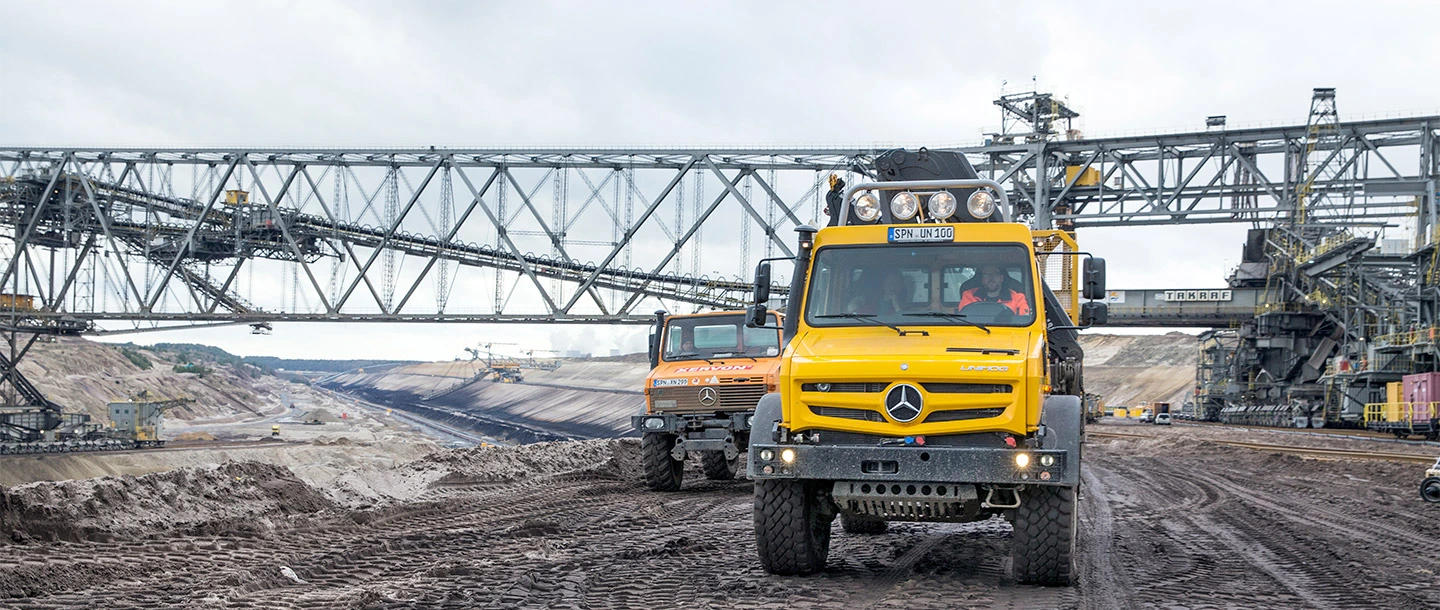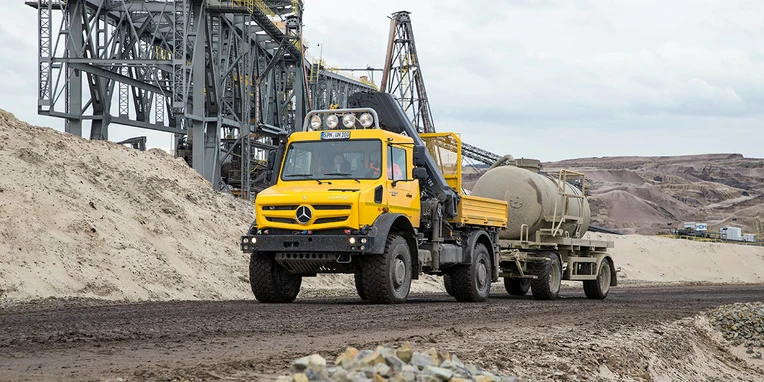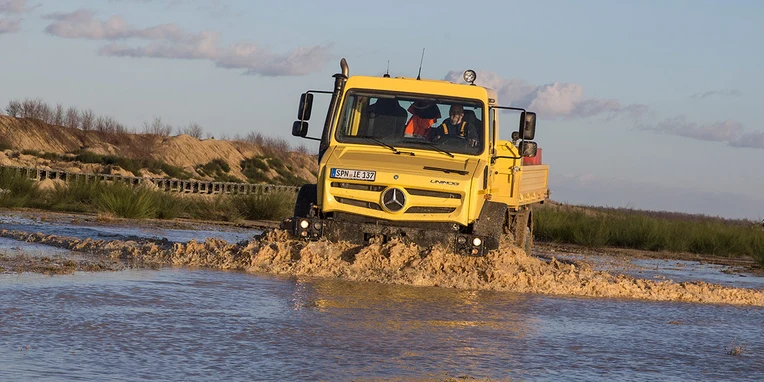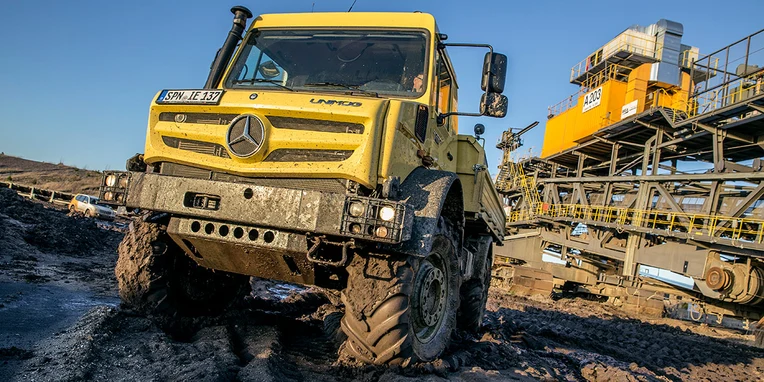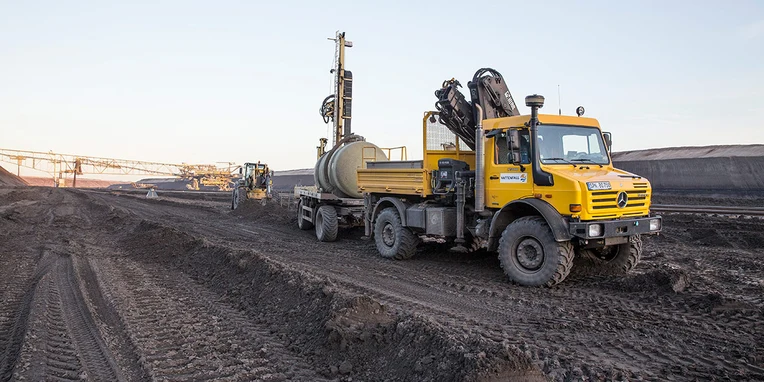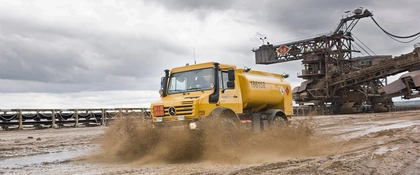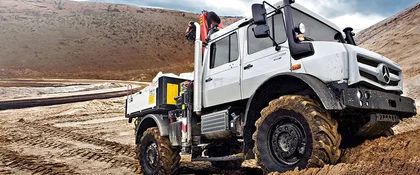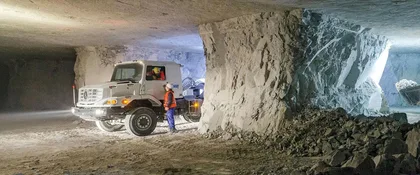Lignite mining in Lusatia in eastern Germany relies on the new Unimog with its extreme off-road capability.
Digging their way through mud, slush and rain, the thick Michelins on the Unimog have done an excellent job of softening up the ground at the open-cast mine in Nochten in the last days of January. The site, situated to the west of the village of Weisswasser in Saxony, mines around 100,000 tonnes of lignite every day.
Ronny Fischer and his colleague have got the last barrel of drilling fluid on their trailer. The early mowing shift is almost over for today. The freshly prepared "soup" is needed at one of the filtering wells, of which some 1000 have been drilled here. "The wells are drilled for dewatering, because it is vital to keep the mining site free from water. There are 7000 litres in the barrel on the trailer, which now has to be taken from the central liquid treatment plant to Reichwalde, Feldriegel 30 – not a problem today, although no easy undertaking recently owing to black ice. "Without the tyre pressure control system, we would have probably got stuck all the time."
"On one occasion, I actually had to unhitch the trailer, but I could even turn it on my own, the ground was so slippery." In his capacity as "foreman for drilling equipment and stabilisation", his official job title, Ronny Fischer supplies the "drillers" with all the equipment they need – core barrels, drill rods – sometimes also a heavy press capable of exerting a force of up to 20 tonnes if there's nothing else for it and a drill rod has once again become hopelessly stuck. In addition, the contaminated drilling fluid has to be extracted from the pits. "So our 5023 is equipped with not only the loading crane, but also a rear PTO shaft for driving the vacuum pump at the site. We then take the full barrels back to the central liquid treatment plant – everything works in a cycle," he explains, as he nudges the steering column gearshift to tell the 231-hp diesel to change up to the next-higher gear. The fleet comprises over 80 Unimogs according to Frank Schroeckh, responsible at Vattenfall Europe Mining AG for process management and optimisation. Four in total, the mining sites are between 18 and 68 km apart. "The majority of our Unimogs are of the UHE model. We use them wherever a normal vehicle would get stuck."
